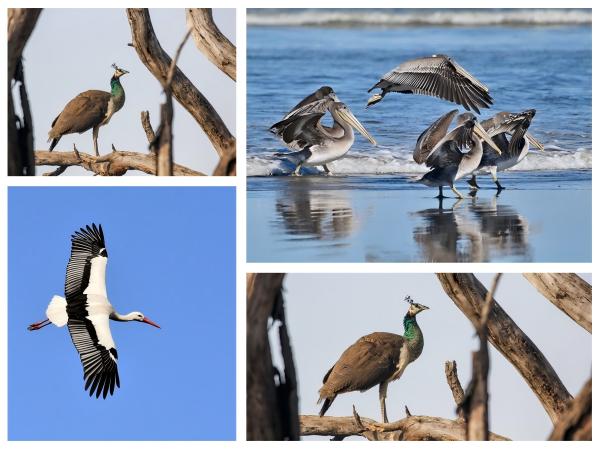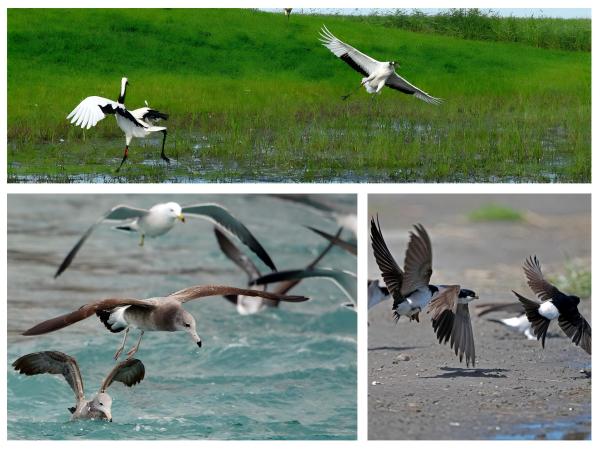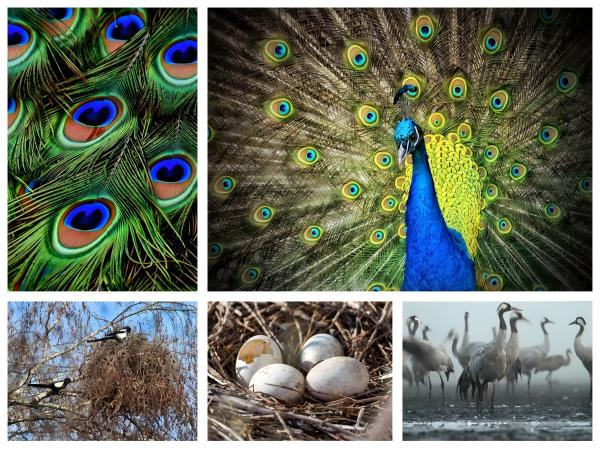Super telephoto lenses, especially those with a focal length of 300mm and above, are indispensable tools in bird photography, allowing you to capture crisp, detailed images without interfering with their behavior, similar to the effect of using a large telescope.
In this article, we will learn about the application of super telephoto lenses in bird photography.
1.Long-range capture capability
Because birds often inhabit areas far from humans, super-telephoto lenses offer extremely high magnification, enabling photographers to capture detailed images of birds from greater distances without disturbing their natural behavior. This feature is especially important when photographing some rare birds.
For example, in nature reserves or the wild, using an ultra-telephoto lens allows you to ignore obstructions such as trees and terrain and directly photograph bird nests in the tree canopy or flocks of migratory birds on the water. Using a 600mm lens, you can shoot objects about 90cm away at a distance of 100 meters, making it easy to capture the moment of hummingbirds flapping their wings or eagles hunting.
Super telephoto lens can capture bird details at long distances
2.Space compression and composition control
Super telephoto lenses offer a powerful perspective compression effect, bringing distant birds closer to the background, making them stand out more clearly in the frame. This blurs the background, highlighting the subject, creating a strong sense of visual depth.
This characteristic of super telephoto lenses allows photographers to focus on specific details of birds, such as feather texture or beak movement, or to create creative compositions.
For example, when photographing a red-crowned crane standing in a wetland, the sunrise and clouds in the background can be integrated with the subject through the lens, enhancing the narrative of the image.
3.Fast focus and instant shooting
Birds often move very quickly, so bird photography requires quick response, fast focus and instant shooting are key requirements. Super telephoto lenses are usually equipped with a high-speed focusing system, which can complete focusing in a short time and capture the dynamic moments of birds.
For example, when the super-telephoto attachment is used with an F4.5 aperture lens, it provides excellent performance even in bright conditions; when photographing swifts swooping down to prey, it can focus in just 0.5 seconds, quickly capturing the momentary dynamics.
Super telephoto lens can quickly capture the instantaneous movement of birds
4.High resolution and detailed rendering
The super telephoto lens can not only shoot birds from a distance, but also capture close-up shots of birds by adjusting the focal length. This capability allows photographers to capture details such as the texture of a bird’s feathers and facial expressions, enriching the expressiveness of their images.
For example, when photographing a peacock spreading its feathers with a super-telephoto lens, the scaly texture of its feathers can be clearly restored. When paired with a teleconverter (such as a 1.4x or 2x), a 600mm lens can achieve an equivalent focal length of 840mm (1.4x) or 1200mm (2x), achieving a “telescopic microscopic” effect, ideal for capturing the microscopic structure of bird nesting materials (such as grass stems and feathers).
5.Adapting to complex environments
The super telephoto lens is very flexible in different environments and is suitable for use in different lighting conditions such as strong sunlight or cloudy days.
For example, in low-light environments, super telephoto lenses often require high ISO settings or flash for capturing wildlife and sports. When photographing birds in swamps or forests, photographers may opt to use a super telephoto lens with a tripod or in-body image stabilization to ensure stable shots.
Super telephoto lens can adapt to different environments
6.Special applications and diverse techniques
Super telephoto lenses can also be used to create unique perspectives and expressiveness, not only for capturing full-body images of birds but also for capturing close-up shots.
For example, by varying the shooting angle and focal length, or using remote control technology, photographers can capture bird behavior or close-ups from concealed locations, capturing the dynamic trajectory of birds in flight or the static beauty of birds at rest. When photographing cheetahs on the African grasslands, a 600mm lens allows for the capture of cheetahs from within a camouflaged vehicle. A 100-400mm lens allows for capturing bird eyes, feathers, and other details.
Final Thoughts:
If you are interested in purchasing various types of lenses for surveillance, scanning, drones, smart home, or any other use, we have what you need. Contact us today to learn more about our lenses and other accessories.
Post time: Oct-24-2025






